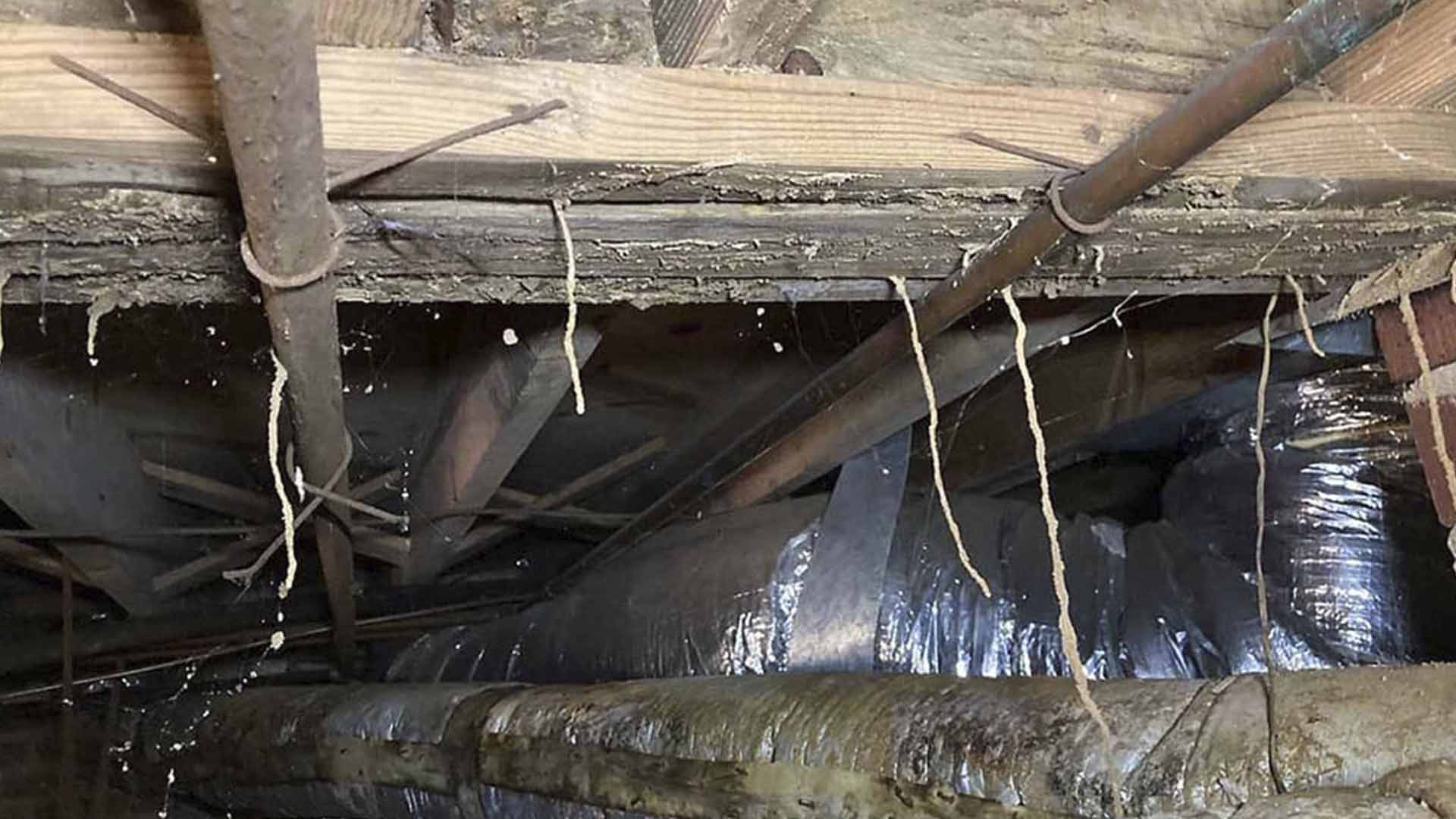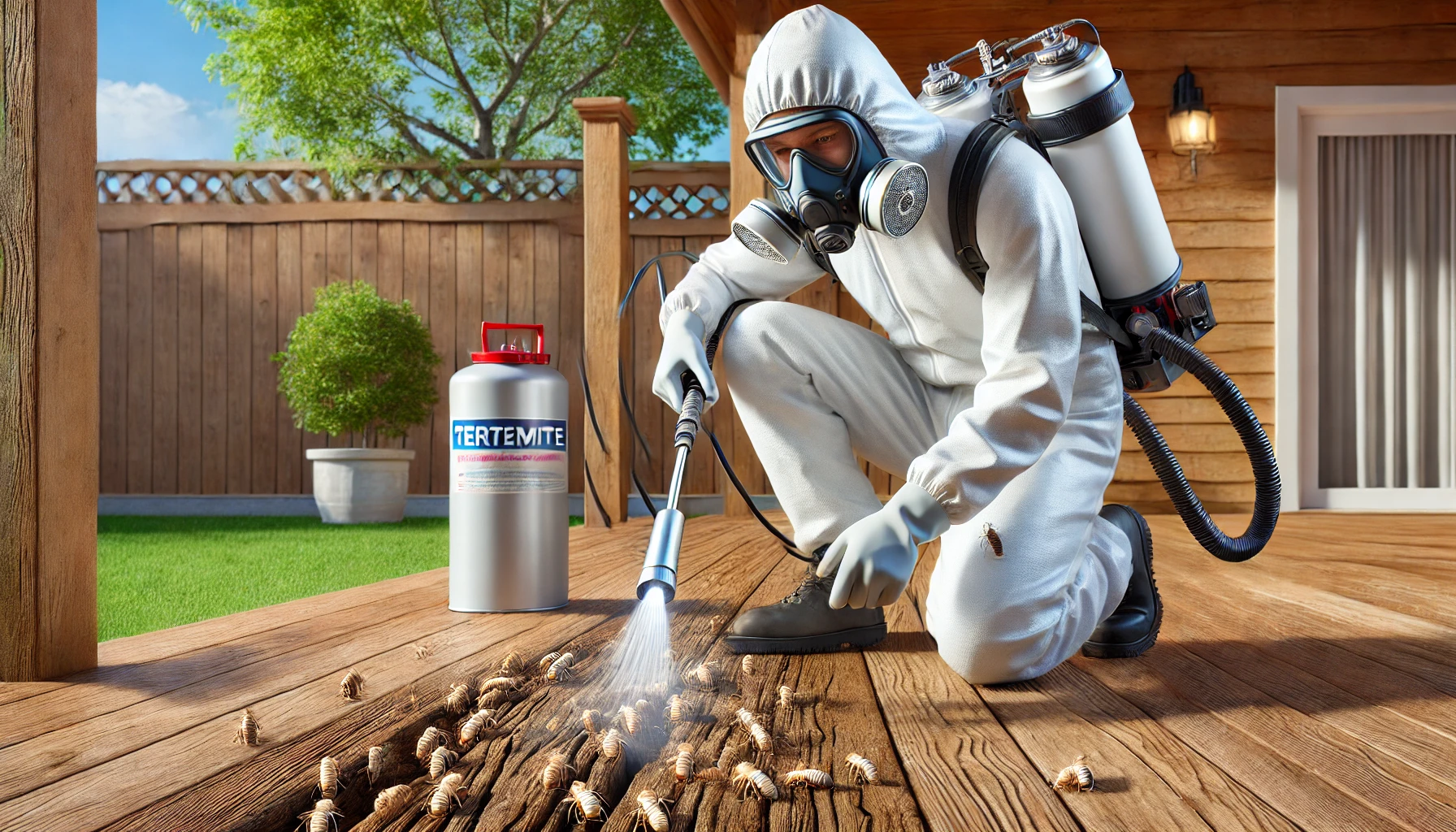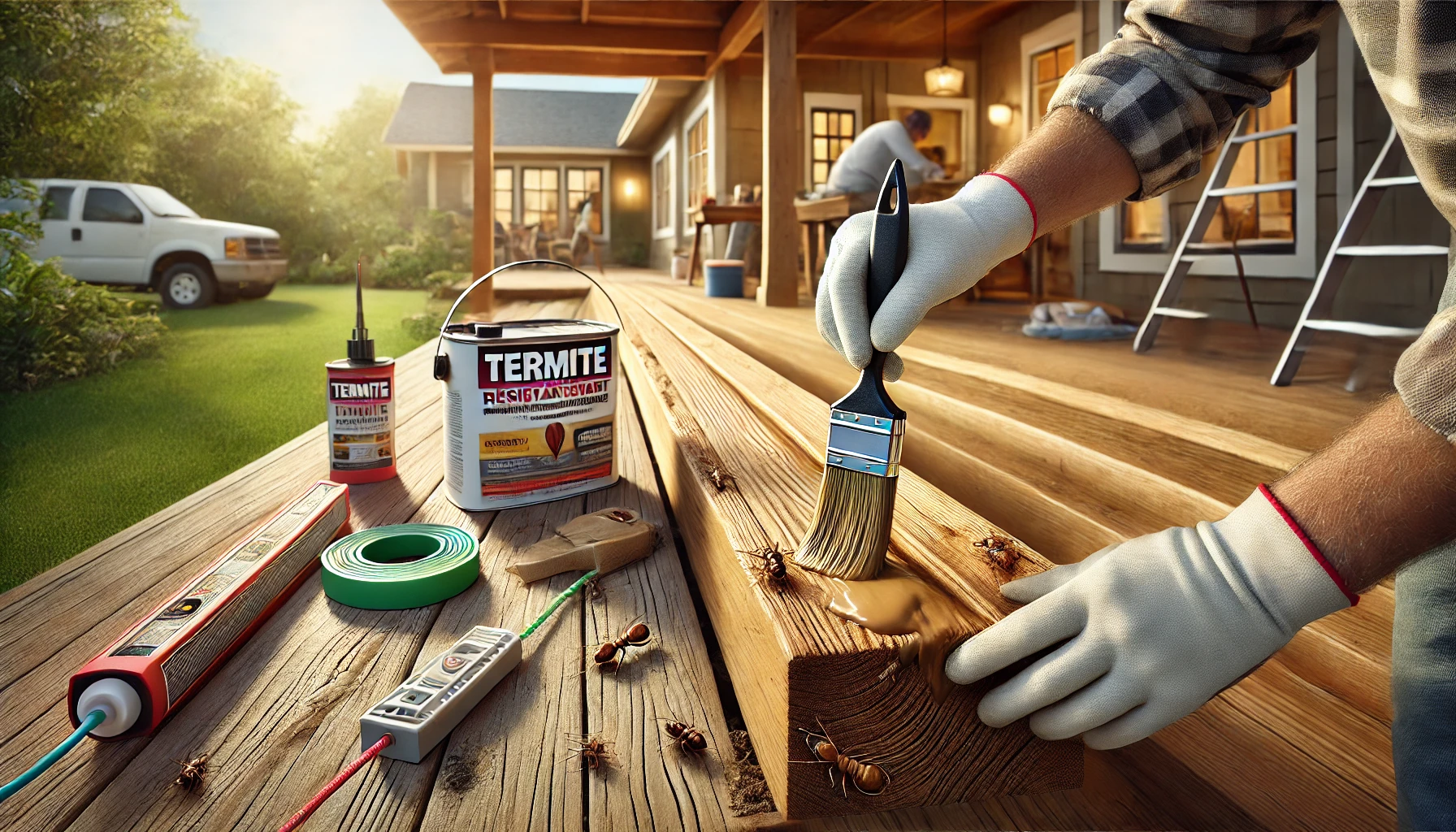Key Takeaways
- Termites are difficult to detect and eliminate.
- Different termite species require specific treatments.
- DIY termite treatments are rarely effective.
- Professional treatments include liquid barriers, bait stations, and fumigation.
- Preventive measures help reduce the risk of reinfestation.
Why Are Termites So Difficult to Treat?

1. They Are Hard to Detect
Termites are silent destroyers—they work inside wood, underground, and within walls, often without any visible signs. By the time damage is noticeable, a colony could have been active for years. Unlike other pests that leave droppings or tracks, termites leave few obvious clues until severe damage occurs.2. Large Colony Size
A termite colony can house hundreds of thousands to millions of termites. Killing only the termites you see doesn’t address the problem, as the majority of the colony remains hidden. Without targeting the queen and the workers deep in the nest, the infestation will continue to grow.3. Different Species Require Different Treatments
-
Overview: There are three main types of termites in the U.S., and each requires a specific approach.
-
Subterranean Termites: The most common and destructive termite species in the U.S. They live underground and enter homes through mud tubes. Effective treatments include soil treatment or bait stations.
-
Drywood Termites: These termites infest dry wood inside homes, such as attic beams and furniture. They do not require soil contact and are best treated with localized wood treatment or fumigation.
-
Dampwood Termites: Prefer moist, decaying wood and are often found in rotting tree stumps or wet areas. Controlling moisture and removing decayed wood is key to preventing infestations.
4. Termites Are Highly Adaptive
Even if part of a colony is destroyed, termites can relocate and establish new colonies nearby. If treatment is incomplete or ineffective, they will reroute their tunnels, adapt, and continue feeding on your home.5. DIY Treatments Are Rarely Effective
Many homeowners attempt do-it-yourself termite treatments, such as store-bought sprays or homemade solutions. However, these often only kill surface termites, leaving the colony intact. Without professional-grade termiticides and knowledge of termite biology, most DIY efforts fail to eliminate an infestation.

Not getting a solution?
Get your free pest control estimate today!Professional Termite Treatment Options
Given the difficulty of treating termites, professional pest control is usually necessary. Here are the most common termite treatment methods:1. Liquid Termiticides (Soil Treatments)
Professional exterminators apply liquid termiticides around the home’s foundation to create a protective barrier. When termites pass through treated soil, they either die immediately or carry the toxin back to the colony. Pros: Long-lasting protection (5-10 years), effective against subterranean termites. Cons: Requires specialized equipment, trenching, and sometimes drilling into the foundation.2. Bait Stations
Bait stations are placed around a home to lure termites. Once termites consume the bait, they carry it back to the colony, eventually eliminating it. Pros: Targets the entire colony, minimal disruption to landscaping. Cons: Slower process (can take months to be fully effective), requires regular monitoring and maintenance.3. Fumigation (Tenting)
For severe drywood termite infestations, fumigation may be required. The home is sealed in a tent, and a fumigant is released to penetrate all wood and kill termites. Pros: Highly effective at killing all termites in a structure. Cons: Requires homeowners to vacate for 2-3 days, expensive, does not prevent future infestations.
4. Wood Treatments
Localized wood treatments involve injecting termiticide directly into infested wood or applying borate solutions to wood surfaces. Pros: Useful for small, localized drywood termite infestations. Cons: Does not protect the rest of the home from new infestations.
DIY Termite Treatment: Is It Possible?
Many homeowners wonder if they can treat termites without professional help. While small, early infestations might be managed with DIY solutions, most infestations require expert intervention.DIY Methods That May Help
-
Diatomaceous Earth (DE): This powder dehydrates and kills termites on contact but won’t reach the colony.
-
Boric Acid: May work in isolated cases but is not a long-term solution.
-
Cardboard Traps: Attract termites but don’t eliminate the colony.
-
Orange Oil: Kills termites on contact but does not penetrate deep into wood.
Why DIY Often Fails
-
Surface-level treatments miss hidden colonies.
-
Homeowners lack specialized tools and chemicals.
-
Untreated infestations can worsen over time.
-
Termites reproduce rapidly, making quick elimination essential.
How Long Does Termite Treatment Take?
The time required to eliminate termites depends on the treatment method and infestation size.| Treatment Method | Time to See Results | Duration of Protection |
|---|---|---|
| Liquid Termiticides | Immediate to a few weeks | 5-10 years |
| Bait Stations | Several months | Requires continuous monitoring |
| Fumigation | 2-3 days | No lasting protection |
| Wood Treatment | Immediate | Varies based on application |
Preventing Future Termite Infestations
Once termites are treated, homeowners should take steps to prevent reinfestation.Ways to Prevent Termites
-
Reduce Moisture: Fix leaks and drainage issues, keep gutters clean, and use dehumidifiers in humid areas.
-
Eliminate Wood-to-Soil Contact: Keep firewood, lumber, and mulch away from the foundation. Use metal or concrete barriers between wood and soil.
-
Seal Entry Points: Close cracks in the foundation and walls, install screens on vents and crawl spaces, and repair damaged wood.
-
Schedule Regular Termite Inspections: Annual inspections can catch termite activity early, and many pest control companies offer maintenance plans.





